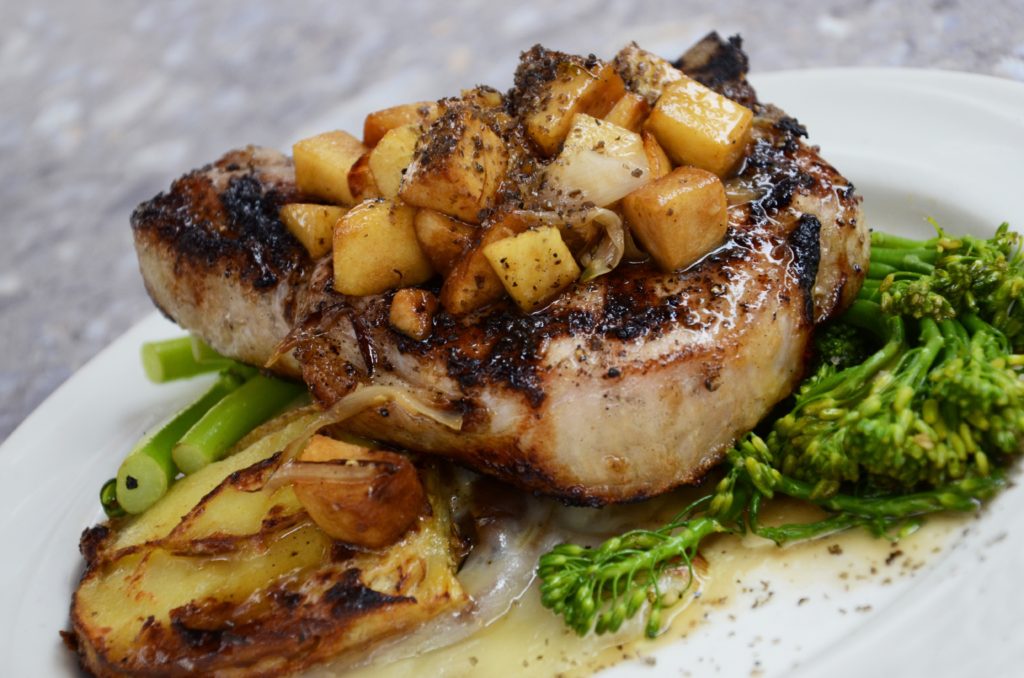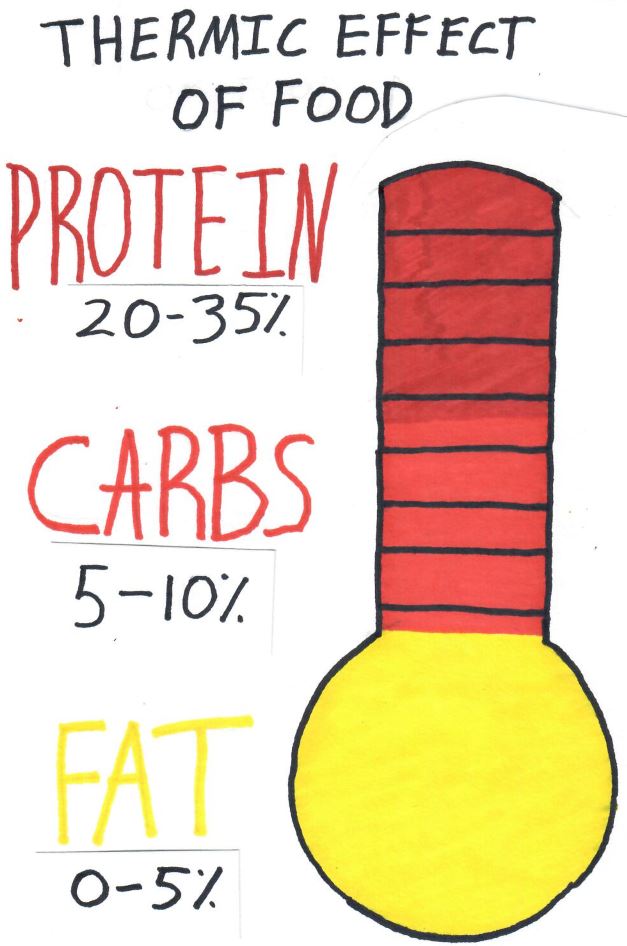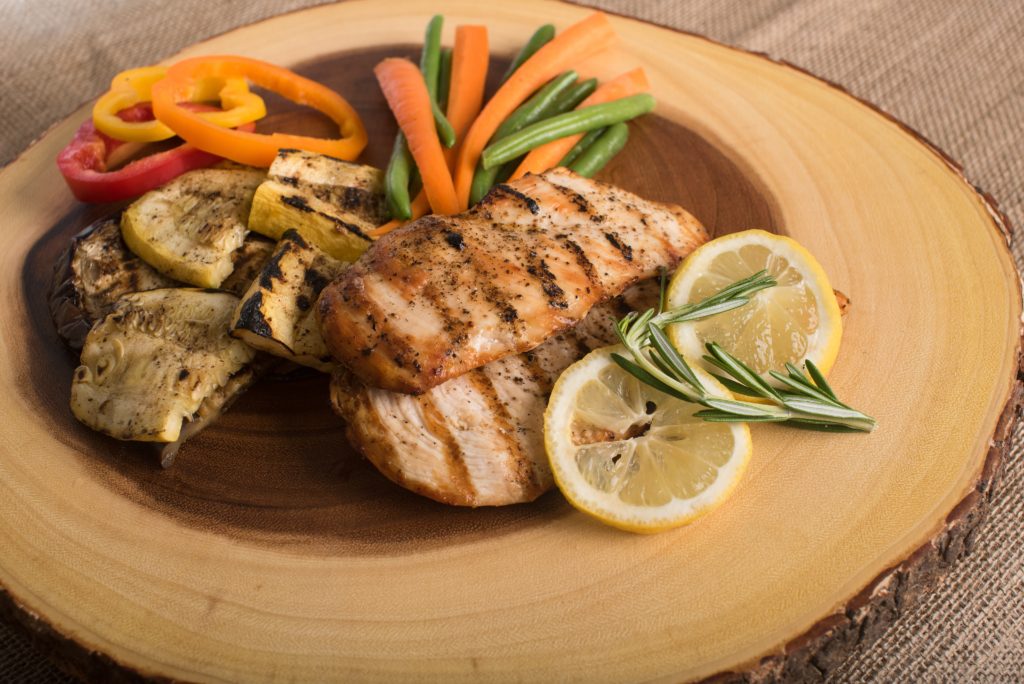For the longest time, diet gurus and internet marketers have tried to sell us the fairy-tale of boosting one’s metabolism. And the supposed benefits are clear – lose more fat, eat more food, and be less physically active while doing so.
That’s the dream, right?
For the most part, however, the natural ways to boost metabolism in most magazines and blogs are a load of crap.
The strategies are ineffective, or the benefit is so insignificant that you’d be better off spending your time and energy on more productive things.
However, there is one often overlooked way we can use to boost metabolism naturally that doesn’t involve being more physically active. Let’s see what that is.
But First, a Brief Primer
Before we get into the meat and potatoes of this article, I’d like to give you a small task:
I want you to think back to a time when you stuffed your face with all of your favorite foods. Maybe you were at a birthday party, had a cheat day, did an all you can eat challenge, or were together with your family on holiday.
Now, think about how you felt after that (maybe later on that day or evening). Aside from possible nausea, chances are, you were hot and sweaty for no apparent reason.
This is the thermic effect of food in action. In other words, the increases in metabolic rate (and core body temperature) attributed to the digestion of food and storage of nutrients.
An Example of Dietary Induced Thermogenesis at Work
If you were to stuff yourself with 4,000 calories in one meal, you could optimistically expect roughly 10% to be used for the breakdown and absorption. Of course, macronutrient composition of the ‘meal’ matters a lot here (we’ll go over that below).
Over the first four hours post-eating, 78% of the hypothetical 400 calories (the 10%) will be expanded. Fast-forward one more hour and that figure jumps to 91 % (1). In essence, you’d burn roughly 400 calories in six hours without doing anything. That’s equivalent to one lifting session in the gym.

Dietary Induced Thermogenesis Explained
Dietary-induced thermogenesis (DIT, or TEF) represents the energetic cost of breaking down the food you consume and the various nutrients you store. The calories from DIT count to your total daily energy expenditure (TDEE) much like your basal metabolic rate (BMR) and physical activity do.
Research suggests that thermogenesis accounts for roughly 10% of daily calorie expenditure on a standard (crappy) diet (2). A diet that is roughly 50% carbohydrate, 15% protein, and 35% fats.
In essence, DIT can be seen as sort of a small ‘investment’ you have to make up front to reap the reward (breakdown of food and use of its energetic value).
Now, why do we need to bother with DIT? Can’t we track calories, eat accordingly to our goals and call it a day?
Well, we can. But as more and more research piles on, we are concluding that DIT, when utilized correctly, can be the tool we’ve been looking for to boost our metabolic rate without doing much.
This would allow us to eat more calories, burn fat, and not spend a ton of time on cardio each week (which, let’s face it, is a great reason itself).
Now, it’s important to examine how various aspects of nutrition impact DIT to develop strategies to use it effectively.
Protein and the thermic effect of food
Aside from its satiety index, this macronutrient also leads the scoreboard with its thermic effect – a mind-boggling 20 to 35% (3, 4, 5). Due to the significant DIT, some researchers have also proposed that each gram of protein be counted as 3 calories instead of 4.
Dr. Geoffrey Livesey (a leading expert in nutritional biochemistry) did just in 2001, during the Food and Agriculture Organization meeting of the United Nations. He’s also written a paper on the issue (6).
He suggested that, because considerable knowledge had been gained since 1889, the concept of metabolizable energy (ME) should be replaced with net metabolizable energy (NME). A model superior in every way that accounts for DIT.
His suggestion (plea, if you will) didn’t go through, however. Two years later, in 2003, the FAO decided to stick with the old model (7).
Why that was the case and why 17 years later we’re still at square one remains to be answered, but that’s the fact.
Now, you’re probably wondering what makes protein’s thermic effect so high. It’s because this macronutrient contains nitrogen, which needs to be separated before we can use the amino acid contents (8).
The amino acids are then used for various biological processes that demand energy – protein synthesis and gluconeogenesis (a process through which glucose is generated through non-carb sources, amino acids in this case) (9, 10).

Fats and the thermic effect of food
Of the three macronutrients, fats are the most calorie dense with each gram containing 9 calories. However, when it comes to DIT, this macro is far from impressive.
We are more primed to store excess triglycerides as fat readily, and there is no insulin response to fat intake (11). Because of that, there is no extra energy expenditure in response to this macronutrient. Making the DIT of fat negligible at best (5). This effect has also been shown in obese subjects (12).
Medium chain triglycerides (MCTs) have been shown to yield higher DIT, up to 13% (13).
So far, the research hasn’t shown anything promising, and it’s safe to assume that the thermic effect of fats is nothing to fret about.
Carbs and the thermic effect of food
After the powerhouse that is protein and the letdown of fats, we’ve got our last macro: carbs.
For the longest time, carbs have had a bad name as fattening and unhealthy. Myths, of course, but a lot of people have jumped the keto bandwagon. Don’t worry; they’ll find something else soon enough.
As the main source of energy for the body, carbs are an essential part of any decent diet. Can you live without them? Sure. You can also move to a secluded part of a forest, build a house out of trees, and hunt squirrels for food.
But the same question applies – why would you do that?
As far as thermogenesis goes, carbs yield a 5 to 10% DIT (5). Nothing amazing to rave about, but there’s more to it.
Storing glucose as glycogen leads to an extra 5 to 10% of processing cost. After glycogen-depleting activities, the DIT increases by another 5 to 10% (14). This does suggest that strategically timing our carb intake may provide a small benefit.
The bottom line here is that the DIT of carbs is not that significant to warrant a new way of tracking, but strategically timing carb intake (pre and post-training) is a good way to increase the DIT temporarily.

Caffeine and its effect on energy expenditure
Caffeine is a well-known stimulant, and there’s a good chance that you’re consuming it in one form or another. But is there any significant thermogenesis here?
As it turns out, caffeine increases energy expenditure in a dose-dependent manner, and an increase in fat oxidation has been seen in leaner individuals (15, 16). Of course, ‘lean’ is seen as below 20% body fat in most studies, so it likely applies to everyone reading this.
It’s also worth noting that caffeine’s effect is highly individual and there are big variations from one person to the next. Tolerance level and genetics probably play a big role here.
I, for example, am highly sensitive to caffeine and if I drink coffee past 4 pm, I won’t be able to fall asleep before midnight. On the other hand, some people can drink a cup of black coffee in the evening and sleep like babies just a few hours later.
From the research we have so far, it’s safe to assume that caffeine intake can have positive effects on metabolic rate and DIT. Also, adding to the argument that caffeine is an appetite suppressant, consuming it seems like a no-brainer to help us control our caloric intake and improve fat loss (17).
Does meal frequency play a role here?
Last, but not least, we’ve got meal frequency. For the longest time, gurus have touted the idea that smaller, more frequent meals ‘stroke up the metabolism,’ improve fat loss and diet adherence.
And sure, each time you eat, there is a small boost in metabolic rate, which is probably where the myth first originated.
However, the boost in metabolic rate is proportional to the total number of calories consumed and the composition of the diet, not the frequency of your meals (18).
So, whether you consume a total of 2,000 calories in two meals or six doesn’t make a difference.
If anything, a recent review tips the scale in favor of a lower eating frequency (19). The researchers found that:
Consuming the same meal as a single bolus eating event compared to multiple small meals or snacks was associated with a significantly higher DIT.
But, as always, my recommendation is to stick to a meal frequency that allows for greater adherence to caloric intake. Prefer six meals? Go for it. Do best with one or two big meals each day? Do that instead.

How to Use The Thermic Effect to Our Advantage
Although I would love to find a strategy that allows me to burn a lot of the calories I consume through the thermic effect, this is largely impossible (to a significant degree). The human body is one efficient bastard.
(Well, there are certain thermogenics out there that help you burn thousands of calories without doing anything, but unless death by heart failure is on your to-do list, I’d stay away from those.)
With that said, there are small things you can include into your life and nutrition that will provide a degree of metabolic boost.
1.Eat more protein
As we discussed above, the protein’s DIT comes up to 20 to 35%, which is quite significant. Depending on different factors (such as how glycogen depleted you are and whether or not you lift weights), you can burn a lot of calories through thermogenesis.
The general recommendations for optimal muscle growth and maintenance come up to roughly 0.8 to 1.2 grams per pound of body weight.
But no research suggests that going higher than that is bad. In fact, aiming to consume upward of 40% of your total calories from protein can elicit a significant enough metabolic increase.
2.Consume more caffeine
It’s generally accepted that up to 400 mg of caffeine per day is safe for most adults (20). Consuming that much each day can provide a significant enough boost in metabolic rate.
But, keep in mind that caffeine can interfere with your sleep, and you should limit its use in the latter part of the day.
3.Consume the majority of carbs pre and post workout
Hardly revolutionary, but the DIT of carbs has been shown to be higher when glycogen stores are lower. This makes carb intake after strenuous training crucial for both glycogen replenishment and DIT.
Aside from that, supplying your body with adequate energy before training allows you to perform better, do more volume and make faster progress over time.
4.Eat fewer, bigger meals
Ha, I can’t believe that I’m saying it. How the tables have turned.
This, of course, is something I recommend to people who struggle with smaller, more frequent meals and end up overeating often. If you’re in that camp, feel free to cut down meal frequency and eat more calories in each sitting. The science supports it.
Follow me / Pump Some Iron on Instagram for updates @pump.some.iron

